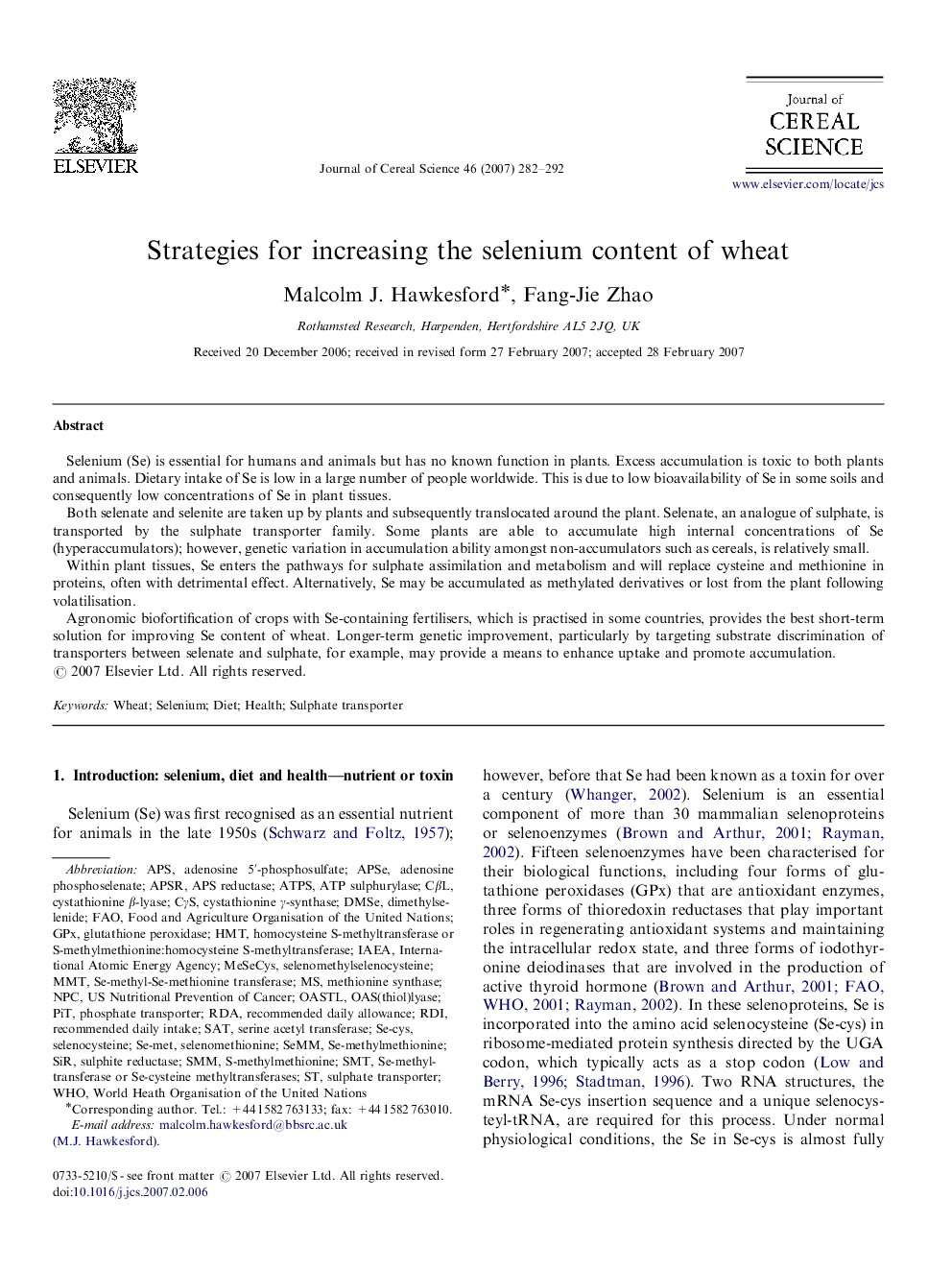| کد مقاله | کد نشریه | سال انتشار | مقاله انگلیسی | نسخه تمام متن |
|---|---|---|---|---|
| 4516735 | 1322370 | 2007 | 11 صفحه PDF | دانلود رایگان |

Selenium (Se) is essential for humans and animals but has no known function in plants. Excess accumulation is toxic to both plants and animals. Dietary intake of Se is low in a large number of people worldwide. This is due to low bioavailability of Se in some soils and consequently low concentrations of Se in plant tissues.Both selenate and selenite are taken up by plants and subsequently translocated around the plant. Selenate, an analogue of sulphate, is transported by the sulphate transporter family. Some plants are able to accumulate high internal concentrations of Se (hyperaccumulators); however, genetic variation in accumulation ability amongst non-accumulators such as cereals, is relatively small.Within plant tissues, Se enters the pathways for sulphate assimilation and metabolism and will replace cysteine and methionine in proteins, often with detrimental effect. Alternatively, Se may be accumulated as methylated derivatives or lost from the plant following volatilisation.Agronomic biofortification of crops with Se-containing fertilisers, which is practised in some countries, provides the best short-term solution for improving Se content of wheat. Longer-term genetic improvement, particularly by targeting substrate discrimination of transporters between selenate and sulphate, for example, may provide a means to enhance uptake and promote accumulation.
Journal: Journal of Cereal Science - Volume 46, Issue 3, November 2007, Pages 282–292